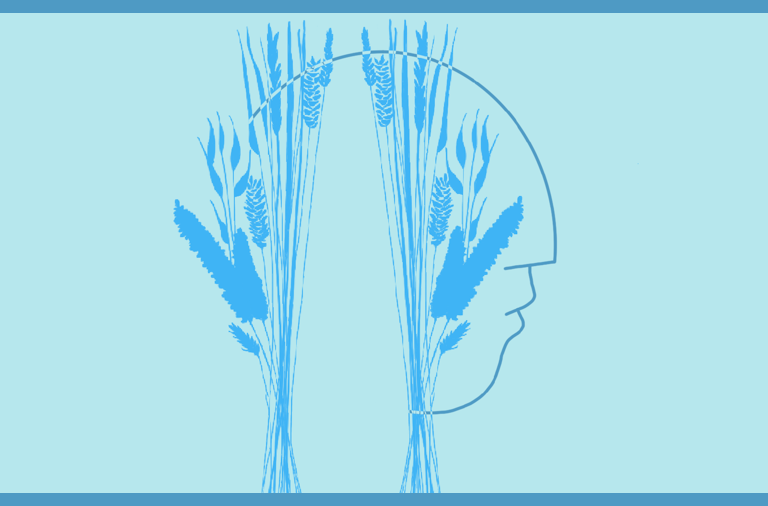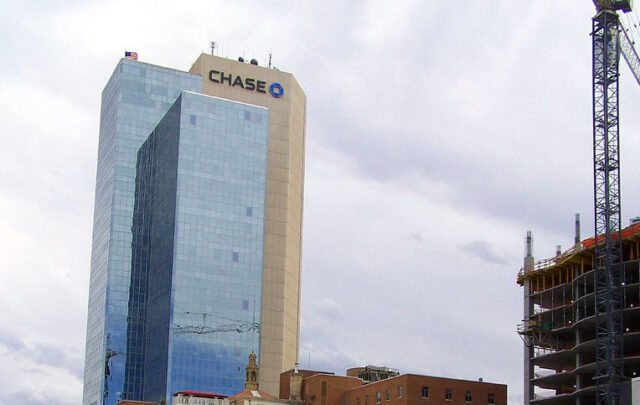WHY LAS VEGAS IS SO STRONG ON COMMUNITY FOOD SECURITY
I was blown away by the inner strength of people I met in Las Vegas when I keynoted at a food conference there in late-August. But if I had written about that in late August, I would have had to brace myself against people scoffing at me.
The month before I left, friends teased me about being so out to lunch as to travel to Sin City in the middle of a desert to give a talk about local food and urban agriculture.
Sadly, as a result of the terrible tragedy of a mass murder in early October, billions of people around the world now know the virtuous side of the strong hearts that beat in Las Vegas. Within four days of the murders, volunteers built a community garden as tribute to those who died. This is a community that has something to teach all of us about the makings of community food security.
This column explores the specific community-building strengths I saw and what they teach all of us about effective local food security organizations.
Strength in community building is different from the strength that is talked about by blowhards, who brag about strength as physical toughness needed to conquer and overpower opposition. I am talking about the strength of character and conviction that enables and empowers others, including the weak and vulnerable.
Anyone who’s ever taken part in a brainstorming exercise on organizational planning has an inkling about the pivotal importance of strength.
SWOT (which stands for Strength, Weakness, Opportunity and Threat) is the most popular of the brainstorming guides. It’s no accident that it starts with S for Strength. Strength is the basic building block of a community organizing strategy.
Strengths (note the plural) drive a strategy. Weaknesses, Opportunities and Threats require steering mechanisms, but only Strength gives the power and empowerment to move forward.
Indeed, Las Vegas showed me that Strength is so fundamental that it needs to stand alone and unmodified for a while. I would argue that Strength requires two modules in a brainstorming exercize — one to identify the strengths in a group, and one to discuss the ways of amplifying those strengths and exerting them directly as opportunities.
Each picture introduces a person or scene bringing a distinctive strength to the whole community food organization. The unusual thing about Las Vegas is the wide range of strengths within the food community. There is an enormous diversity and balance of skills, career specialties, age groups, ethno-cultural and racial backgrounds, and interests. Whatever the income level of any particular community or neighborhood, there is a wealth of talent that an organization can tap into.
In the conclusion, I will suggest some ways to put this diversity to work to build a local food organization. I hope you will look at this portrait gallery, and see ways of expanding the range of strength-based opportunities in your neck of the woods.
STRENGTH IN NUMBERS
The open spaces, nearby mountains, warm weather, low cost of living, and plentiful service jobs attract a few million people who live in Las Vegas.
But the casinos, specialty restaurants, world class entertainers, gambling and top-rate conference and exhibition facilities attract 43 million visitors a year.
Numbers that high give skilled food organizers a lot of room to grow. There are niche business opportunities for eco-tour operators, for artisan food producers selling souvenirs and mementos, and for specialty restaurants catering to people on special nights out. Branding-wise, there are opportunities for food organizations to play a role in diversifying both the reality and reputation of Las Vegas as a city with a lot more to offer than gambling and shows. There’s also an unparalleled opportunity to educate a large number of people about such topics as water conservation and indoor agriculture.
WARRIORS, WORKERS OR WEAVERS?
It takes all kinds to build a community-based food organization, but mostly it takes three personality types with distinct political skills — warriors, workers and weavers.
Las Vegas’ strength is that many people double up and do some working as well as weaving
Las Vegans such as Corrie Bosket get down on their hands and knees and get dirt in their fingernails when they pitch in to build a new community garden here, in the heart of an early (post-World War 11) Afro-American community. The neighborhood has been classified as a “food desert,” but as of 2017, the desert is starting to bloom.
Bosket also coordinates conservation programs at University of Nevada Cooperative Extension, and helped weave together and steer the group that staged the conference on urban agriculture and food sustainability.
PEOPLE-CENTERED FOOD POLICY
Aurora Buffington also played a leading role as host and moderator.
Although she has a PhD in nutrition and public health, the asset she adds to a community food organization is her understanding of the people side of food, which is every bit as important as the nutrients in food and the production and distribution phases of the agri-food supply chain.
“I love food,” she says. “It’s a tasty thing that nourishes our body. I want food to be delicious and beautiful, not just healthy. I want it to be about physical and mental health.” This is the viewpoint of people-centered food policy.
This comprehensive and positive view of what food can do for people and cities is crucial to the success of community food organizations. Strong community organizations focus on solutions, and avoid focusing on fears, problems and dangers.
A GOOD TIPPER AND ENTHUSIAST
In his famous book on The Tipping Point, Malcolm Gladwell discusses the various personality types needed to tip a potential trend into a real trend.
Gladwell’s Law of the Few highlights connectors — “people with a particular and rare set of social gifts,” who can introduce people from one group to people from other groups.
Rick Passo plays that role in Las Vegas. He calls himself a “consultant, community activist and dreamer” who is “interested in hubs, incubators, urban agriculture, employing vulnerable people, especially those with mental health disabilities.”
I was a major beneficiary of Rick’s networking skills because he struck up an online conversation when I posted something about urban agriculture and mental health on Facebook. After a year of collaborating to promote the mental health benefits of urban agriculture, he suggested that I be invited as keynote speaker at the local food and urban agriculture conference.
MANY ARE CALLED. BUT F.E.W. ARE CHOSEN
What’s a trained architect and head of a consulting firm on green buildings doing on the planning committee of a community food conference, and what does he add to the process?
Rick Diepen and I got a chance to know each other when we were on the advance team in charge of planning the conference. The telephone conference calls among steering committee members always surprised me because everyone who was supposed to be on them was on them, and — even more surprising — had done the work they agreed to do at the last conference call. While emailing Rick for details on one of my assignments, I asked by-the-by why things were going so smoothly and efficiently down there. He told me that Las Vegas has a core grouping of people who agree informally on the motto: Get Sh*t Done!
The GSD procedure manual evolved in Las Vegas because there was a critical mass of people who were used to collaborating with each other across organizational barriers and hierarchies, and they shared a common sense of both purpose and urgency. In Toronto, a similar guideline among like-minded people was more polite, as you might expect in a city known as Toronto the Good. It was “Don’t ask for permission. Beg for forgiveness.”
Unless a core group accepts some version of this ethic, no project that requires collaboration across departmental lines and hierarchies ever amounts to anything. Hierarchy and departmentalism sabotage the greatest of plans. During the 1940s, wartime emergencies led the Lockheed aircraft company to find a way around the hierarchy by developing a “skunkworks” team to get an otherwise-impossible job done.
I believe Food Policy Councils and other inter-departmental/intergovernmental/inter-sectoral action and implementation teams only succeed when they operate on this basis. No government or business has a department of food and community development, so the work can only succeed outside of the solos that have kept the work from happening until now. Las Vegas has the secret sauce.
Diepen, like Amber Bosket (discussed below), also ensures that the community food leadership in Las Vegas proceeds on the basis of FEW security, not just food security. Las Vegas, as most people know, is located in a desert where even people high in the hierarchy understand that food is not possible without water. So at some point, the people who do work on food need to talk with the people who do work on water. The same goes for energy. There’s no food or irrigation water without energy.
So the next-generation and leading-edge formulations of Food-Energy-Water nexus or FEW (Food/Energy/Water) Security (see this and this) — as distinct from one-dimensional food security — is second nature here.
Las Vegas has a unique strength in Getting the Food Energy and Water Nexus Done!!
THE SOUTHERN NEVADA COMPLETE WORKS
The complex of specific jurisdictions that outsiders know as Las Vegas is known to locals as the Southern Nevada Region. Representatives of that amalgamated regional government attended the local food conference. They added the strength that comes from a visionary plan, which orients thinking toward “the future we want,” rather than the inherited obsolescence we’re stuck with.
Rae Lathrop presented key regional visions to the planning meeting held the day before the main conference. “Complete communities” is one of several cross-cutting and unifying themes in the regional plan. The theme, adopted in 1991 by urban planners with an eye to resource efficiency, is tailor-made for a community-focused and people-centered lens on food.
Complete community planning rejects the 1950s notion of dividing cities into one area for shopping, one for homes, one for downtown offices, one for retail shops, one for factories, one for fast food strips, one for schooling, one for recreation — all linked together by freeways and cars. Instead, complete communities strive to have as many life needs as possible within walking or cycling distance. That cuts down on car-dependence and all it leads to — land lost to paved highways and parking lots, air compromised by pollution and global warming emissions, people excluded from opportunities because they’re too old, too young or too broke to drive a car.
Once a local government supports complete communities, the way is clear to see food as a tool or lever that advances that city objective — over and above the nutritional and health advantages of food. Because food is a daily necessity, it’s ideal for planners looking for ways to anchor main streets, alive with today’s version of “butchers, and bakers and candle stick makers” — local independent restaurants, deli’s and specialty food shops, neighborhood gastro-pubs, farmers markets, school gardens for use in the summer when students are away, butterfly gardens (which increase biodiversity), rain gardens (which prevent floods), green roofs and walls (which cool the city), and so on.
Seeing food as a lever for a wide variety of major city functions and visions — not just an agricultural or health project tied to other levels of government — is increasingly central to food policy councils, which gain influence by working with food’s unique “multi-functional” and leverage potential. Even if a city department has no formal mandate to deal with food, properly-implemented food programs can support almost every department of any level of government. Ability to tap into this understanding is therefore key to the strength of food policy councils and community food organizations.





